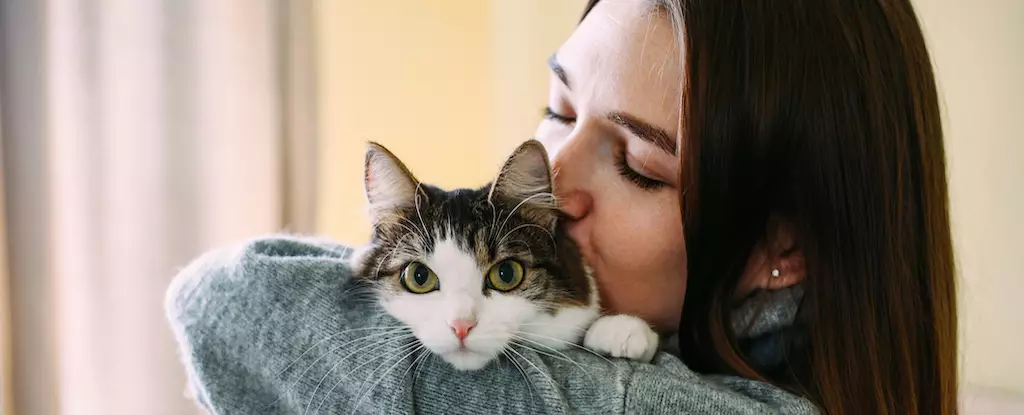As society continues to evolve, so do our approaches to mental health and emotional well-being. Traditionally, dogs have reigned supreme in the realm of therapy animals, often seen prancing through hospitals, schools, and care homes, radiating joy and comfort. However, an underappreciated alternative is starting to gain momentum: therapy cats. The growing awareness of therapy cats highlights an important shift in our understanding of animal-assisted therapy and the beneficial roles that felines can play in less conventional therapy settings.
Therapy cats offer a unique approach, addressing the needs of individuals who may be intimidated by larger animals or simply prefer the temperament of a cat. From prisons to schools and hospices, these furry companions are proving to be effective in alleviating feelings of loneliness and anxiety among diverse groups of people. However, the term “therapy cat” is often misused or misunderstood, raising the need for clearer definitions in both media and scientific communities.
The Behavior Puzzle: Why Some Cats Flourish
Cats have long been perceived as creatures that thrive on predictability and stability, valuing their territory and familiar scents. This contrasts sharply with the unpredictable environments typically encountered during therapy sessions. Nevertheless, recent trends showcase a remarkable number of cats traveling alongside their owners across various landscapes—be it campervans, airplanes, or motorcycles—suggesting that an increasing number of cats may be more adaptable than previously thought.
A pivotal concept within animal behavior research, known as the secure base effect, provides insight into why some cats thrive in these unfamiliar settings. Research led by Alexandra Behnke in 2021 showed that about half of their study’s 42 cats exhibited this phenomenon, suggesting that a trusted human can facilitate the cat’s sense of safety, enabling exploration and reducing stress. The findings raise important questions regarding the selection and training of therapy cats, highlighting that individual traits can significantly impact a cat’s capability to function in varied environments.
Traits That Matter: The Unique Selection of Therapy Cats
In exploring the specific traits that might make some cats more suitable for therapy work, a fascinating study conducted by Belgian researcher Joni Delanoeije offers relevant insights. The survey analysis of 474 cats revealed that those involved in animal-assisted services displayed higher sociability and lower resistance to restraint compared to the average pet. These characteristics are critical when selecting cats for therapy work, as they not only need to be sociable but also adaptable to the dynamics of the environment they serve.
Despite promising findings, one must acknowledge the limited pool of cats involved in these studies, emphasizing the need for more expansive research to validate the behaviors and traits that distinguish therapy cats. Each feline is an individual, and early socialization combined with gradual exposure to new environments can pay significant dividends in preparing them for the unpredictable world of therapy sessions.
The Emotional Connection: Handlers and Their Feline Partners
The relationship between handlers and therapy cats cannot be underestimated. A 2023 study revealed a concerning trend: 68% of therapy visits were terminated early due to the comfort and well-being of the cat, showcasing the handlers’ responsibility to prioritize their pets’ welfare. A strong bond between the handler and therapy cat not only influences the cat’s ability to adapt but also underscores the importance of a nurturing environment, which is crucial for the success of therapy interventions.
Cats, with their distinct behavioral patterns, require an understanding of their unique social needs. Their differences from dogs offer an opportunity to explore new paths in therapy settings. For instance, therapy cats may be especially beneficial for individuals who self-identify as “cat people”—often more independent, creative, and introspective—who may prefer quieter, one-on-one interactions over group dynamics.
The Therapeutic Value of Purring: A Hidden Gem
Beyond emotional support and companionship, therapy cats possess innate traits that provide therapeutic benefits through their unique purring vibrations. Scientifically, studies from previous decades indicate that the frequency of a cat’s purr, which lies between 25 and 50 hertz, may promote healing processes in humans. While contemporary research lending to this aspect remains sparse, patients’ anecdotal testimonies reflect the calming effects associated with their cats’ purring, further solidifying the idea that these creatures can provide distinct healing through their presence.
In a world that often equates therapy with traditional approaches, therapy cats bring a refreshing alternative that acknowledges the diversity of emotional needs among individuals. Their presence can not only serve comforting purposes but can also offer supportive therapy tailored for those who may not resonate with canine companions. The evolving landscape of therapy animals indicates that cats, in their gentle and nuanced ways, may have profound capacities for healing, beckoning us to challenge the dominant narratives surrounding animal-assisted therapy.


Leave a Reply